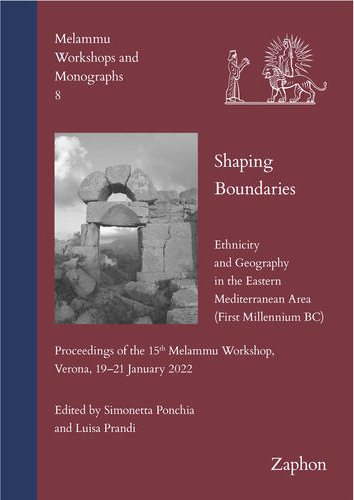Shaping boundaries in the Eastern Mediterranean area in the first Millennium BC
Fifteenth Workshop of the Melammu Project
Verona
19-21 January 2022
Organisers: Simonetta Ponchia and Luisa Prandi
Shaping Boundaries. Ethnicity and Geography in the Eastern Mediterranean Area (First Millennium BC).
Proceedings of the 15th Melammu Workshop
Edited by Simonetta Ponchia and Luisa Prandi
Melammu Workshops and Monographs 8
2022 / ISBN 978-3-96327-202-8 (book) / ISBN 978-3-96327-203-5 (e-book) / 282 pages

Details and Contents
|
|
Workshop Program
|
Mediterranean Sea has always been a space for communication, characterized by dynamics of exchange and opposition, cooperation and hostility between its shores. Over time, identities and affiliations have been constructed on the development of these dynamics and often on their interpretations. This project aims to analyse a crucial phase: the formation of Greek identity, the first western one, at the time of the contacts with the Near East during the First millennium BCE. Specific object is the analysis of the interactions between the Syro-Mesopotamian, Levantine and Aegean worlds that took place along the coastal region extending from Bosporus to Syria and Lebanon. The project focuses on this East/West interface area and on the political, economic, cultural or artistic aspects of the interactions that there took place; it aims at identifying times, spaces, and reasons for the construction and definition of boundaries and separation lines – natural or ethnic - and at evaluating the actual functionality of these boundaries as dividing and/or communication spaces, with the purpose to verify the validity of the interpretative models in the specific historical context of political and intercultural relationships.
The program can be found here.
|
|

